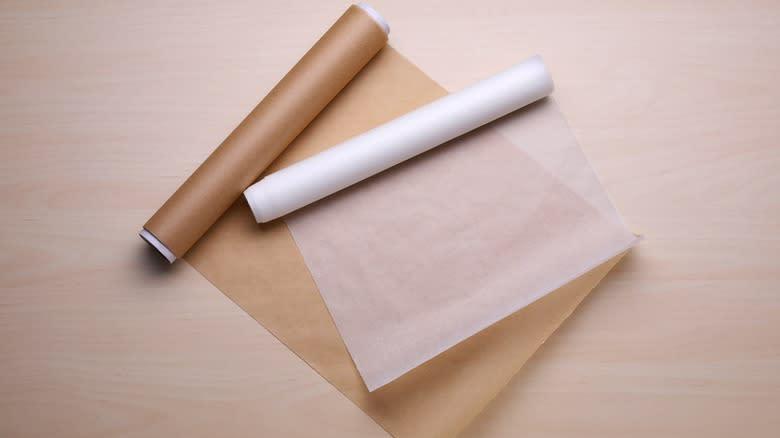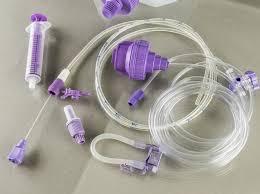Butcher Paper vs. Parchment Paper: Key Differences

What's the difference between butcher paper and parchment paper? This is a question many home cooks, chefs, and food business owners ask. Both types of paper are widely used in kitchens, but they serve very different purposes. If you're unsure about which one to use, this guide will help you understand the key differences.
When it comes to choosing the right paper for cooking or wrapping, knowing the characteristics of each is important. In this guide, we will explore every aspect of what's the difference between butcher paper and parchment paper to help you make the right decision for your kitchen needs.
What Is Butcher Paper?
Butcher paper is a thick and strong paper that is often used to wrap raw meat and fish. It’s made from kraft pulp and is usually uncoated. It can be white or pink, depending on its use. Pink butcher paper is commonly used for smoking meat because it allows moisture to escape without drying out the meat.
Uses of Butcher Paper
-
Wrapping raw meat at butcher shops
-
Smoking meat for BBQ
-
Protecting surfaces while prepping food
-
Craft projects and table coverings
Because butcher paper is breathable, it is ideal for smoking meats like brisket. It lets air in but holds in moisture, giving the meat a great texture and flavor.
What Is Parchment Paper?
Parchment paper is a non-stick, heat-resistant paper used mainly for baking. It is coated with silicone, which makes it non-stick and able to handle high temperatures. Parchment paper is also used to line baking sheets and cake pans.
Uses of Parchment Paper
-
Lining baking sheets for cookies
-
Wrapping fish or vegetables for baking
-
Preventing sticking in cake pans
-
Rolling dough without extra flour
Parchment paper makes baking easy because food doesn’t stick to it. It can be cut to fit pans and makes cleanup fast and simple.
Key Differences Between Butcher and Parchment Paper
Though both papers are used in the kitchen, they have very different properties and uses. Here’s a breakdown of the main differences:
Material and Coating
-
Butcher paper is uncoated and made from kraft pulp.
-
Parchment paper is coated with silicone for non-stick properties.
Heat Resistance
-
Butcher paper can’t handle high heat and may burn in the oven.
-
Parchment paper is oven-safe and can handle up to 420°F.
Purpose
-
Butcher paper is best for wrapping meat, especially for BBQ.
-
Parchment paper is best for baking and non-stick cooking.
Texture
-
Butcher paper is rougher and thicker.
-
Parchment paper is smoother and lighter.
Which One Should You Use?
Choosing between the two depends on your goal. If you need to bake cookies or roast vegetables, parchment paper is the right choice. If you're smoking brisket or wrapping raw meat, butcher paper is best. It also works well for storing large cuts of meat or fish.
Why It Matters for Food Businesses
If you own a food business, choosing the right paper can improve quality and safety. Using parchment paper for baking prevents sticking and saves cleanup time. Butcher paper helps meat stay fresh longer and improves smoking results. see more
Pros and Cons of Butcher Paper
Pros:
-
Strong and tear-resistant
-
Good for wrapping meat
-
Great for BBQ and smoking
Cons:
-
Not oven-safe
-
Not non-stick
-
Can absorb liquids over time
Pros and Cons of Parchment Paper
Pros:
-
Non-stick surface
-
Oven-safe
-
Easy cleanup
Cons:
-
Not strong for wrapping
-
Can be more expensive
-
Not reusable
When to Use Each Paper Type
Understanding when to use each type of paper helps you avoid mistakes in the kitchen. Below are examples of when to use butcher paper versus parchment paper.
Use Butcher Paper For:
-
Smoking meats like brisket or ribs
-
Wrapping meats for the freezer
-
Protecting surfaces during meat prep
Use Parchment Paper For:
-
Baking cookies, cakes, or pastries
-
Roasting vegetables or fish
-
Lining pans for easy food removal
How to Store and Handle Each Paper
Proper storage helps both types of paper last longer. Store them in a dry, cool place away from direct sunlight. Keep parchment paper in its box or a drawer. Butcher paper can be stored on a roll or hung near prep areas in kitchens.
Buying Tips for Kitchen Use
When buying parchment or butcher paper, choose food-grade versions. They should be safe for direct contact with food and free from harmful chemicals. Always read product labels to know if they are oven-safe or moisture-resistant.
Eco-Friendly Options
Both types of paper come in eco-friendly versions. Look for parchment paper that is unbleached and compostable. Butcher paper made from recycled kraft pulp is a good option for sustainable kitchens.
Fun Facts About These Kitchen Papers
-
Pink butcher paper is used in Texas BBQ to wrap brisket.
-
Parchment paper was first used by bakers in Europe.
-
Some parchment papers are reusable if wiped clean gently.
-
Butcher paper is also used in art classrooms for drawing.
Tips for Better Use in Cooking
To get the most out of your paper, follow these tips:
-
Don’t use butcher paper in the oven.
-
Use parchment paper to avoid greasing baking pans.
-
Wrap fish in parchment with herbs for flavorful meals.
-
Use butcher paper as a barrier on cutting boards.
Common Mistakes to Avoid
Many people use the wrong paper and end up with bad results.Your Box Packaging Here are mistakes you should avoid:
-
Putting butcher paper in the oven
-
Using parchment paper on a grill
-
Not checking the paper’s heat limit
-
Using cheap paper that isn’t food-safe
Conclusion
Choosing between butcher paper and parchment paper doesn’t have to be confusing. Knowing their differences helps you use the right one for each cooking or wrapping task. Use butcher paper for meat and BBQ, and parchment paper for baking and roasting. Always check heat resistance and food safety before use.
Your choice of kitchen paper can improve your cooking, reduce mess, and enhance your food’s taste and presentation. Whether you run a bakery, BBQ joint, or home kitchen, the right paper matters.








